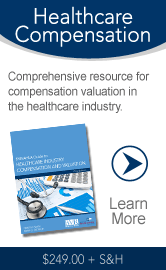 |
 |
Issue #20-1 | January 16, 2014

| Beware of below-value deals in joint ventures Joint ventures between hospitals and physicians can be a breeding ground for tough anti-kickback penalties if dealings are below fair market value. Case in point: A Montana hospital was in a joint venture with physicians to own and operate a medical office building on the hospital’s campus. The Department of Justice alleged that the hospital provided improper financial incentives to the physicians that made referrals to the hospital. These incentives were in the form of leases and other arrangements that were below fair market value. The hospital agreed to pay the federal government $3.85 million to resolve the allegations, according to a DOJ announcement. The DOJ alleged that St. James Healthcare (Butte, Mont.) and its parent company, the Sisters of Charity of Leavenworth Health System (Denver), violated the anti-kickback statute, the Stark Law, and the False Claims Act because of the improper financial incentives. These incentives included a payment to the joint venture that increased the share values for the physicians and physician groups in the joint venture and resulted in lease rates for the physicians renting space in the medical office building that were below fair market value. Additional incentives provided by St. James and Sisters of Charity included lease rates for the land upon which the medical office building was constructed and other arrangements related to shared facilities, use, and maintenance that were below fair market value. The claims settled by the agreement are allegations only, and there has been no determination of liability. Legal picture: The federal anti-kickback statute sets forth the general principle that healthcare providers cannot exchange remuneration in return for referrals of federal healthcare program business. The federal physician self-referral law (Stark Law) incorporates a similar principle by prohibiting certain physician referrals to entities that physicians have compensation arrangements with unless the arrangement meets an applicable exception by, among other things, not providing compensation based on the volume or value of referrals by the physician. Federal law prohibits payment by federal healthcare programs of medical claims that result from arrangements that violate the anti-kickback statute or the Stark Law. “Improper financial arrangements between hospitals and physicians not only undermine the integrity of the decisions that doctors make, they raise the cost of health care for all of us,” says Stuart F. Delery, assistant attorney general for the Justice Department’s civil division. “The department has longstanding concerns about such conduct and is committed to working with health care providers that come forward to disclose their misconduct.” There are a number of scenarios—in addition to joint ventures—in which referrals should be examined carefully. They include compensation arrangements, acquisitions of practices, and noncompete agreements. The BVR/AHLA Guide to Healthcare Valuation contains examples of contexts where you should avoid the attribution of value to referrals of federal healthcare program business when structuring and valuing business arrangements. New model measures the value of EHR What’s the ROI of your electronic health records (EHR) system? The Institute of Medicine (IOM) has published a discussion paper that proposes an evaluation model for health systems and clinicians to use in calculating the financial implications, benefits, and costs of implementing and optimizing EHRs and related technologies. The authors suggest that a standard model that allows for consistent comparison across EHR implementations can enable more useful assessments of the value of EHR systems and the related process re-engineering necessary to fully realize their value. “We hope this model provides a useful reference for providers, policy-makers, product vendors, and researchers, among others,” says Jonathan Perlin, one of the authors, in a blog. “Even more, we hope this model sharpens the business case for EHR implantation and advanced information technologies that improve the safety, quality, and efficiency of health care and foster a learning health system.” Hospitals must boost performance 20%-40% to thrive Boosting revenue and containing costs continue to be among the priorities for hospitals and health systems as they face more pressure than ever to thrive in a rapidly changing healthcare market, reveals a brief from Huron Healthcare Consulting. “As they transition away from fee-for-service toward value-based payment models, healthcare leaders recognize the need to improve performance by 20% to 40% to create the margins needed to thrive,” says the brief. To do this, every important operational, clinical, and governance function needs to be evaluated. Five of the key challenges providers will face over the rest of this year are: (1) pacing the shift to value-based models; (2) responding effectively to the economic dynamics of local markets; (3) securing and growing market share; (4) containing core operating costs; and (5) developing alternative revenue streams. ACOs have big impact on inpatient usage Early evidence indicates that the transformation agenda in healthcare is taking hold. Accountable care organizations (ACOs) are having major effects on hospital inpatient usage, according to a new study published in Health Affairs. Usage down: The researchers, led by Robert York (Kaufman Hall), analyzed 71 hospitals in Illinois and the greater Chicago area, covering seven counties and 8.5 million people. Inpatient and outpatient data showed that the 71 hospitals discharged about 1.02 million inpatients in 2010, but, by 2012, the number dropped to 970,000. The data were analyzed to determine whether accountable care correlated with better results than traditional fee-for-service models. The researchers found that ACO-style care did better than traditional care in driving down avoidable admissions as well as shortening lengths of stay. Under traditional models, discharges of patients with ambulatory care-sensitive conditions dropped 3.8% and length of stay dropped 2.4% over the study period. Under ACO-style care, discharges dropped 6.3% and lengths of stay dipped 3.9%. This provides "early evidence that hospitals and doctors working under accountable care principles are more successful in keeping patients with chronic conditions out of the hospital, and shortening hospital stays when hospitalization is required." ACO Guide: Healthcare Intelligence Network's Essential Guide to Accountable Care Organizations answers key questions so that hospitals, PHOs, IPAs, and other physician organizations, networks, or group practices can assess market position and readiness for the ACO model and move quickly to improve profitability and market share. New healthcare CEOs likely to fire the CFO Nearly half of CFOs, CIOs, and COOs are terminated within nine months of a new CEO’s hire, reveals a new Black Book Rankings poll of 1,404 healthcare provider organizations’ human resources officers and board members. No experience necessary: Black Book estimates that two-thirds of CEOs hired in 2014 will have little to no experience in the healthcare sector. Instead, hospitals will look for nonindustry productivity, business development, and financial management experts with heavy technology expertise. According to respondents, only 39% of CEOs hired in 2013 came from another hospital CEO position, down from 79% in a 2009 Black Book survey. Healthcare data breaches to skyrocket Consumer data breaches are headline news these days, but healthcare will be a hotbed of breaches of data and patient privacy over the rest of the year, reveals a report from Experian, the 2014 Data Breach Industry Forecast (registration required). "The healthcare industry, by far, will be the most susceptible to publicly disclosed and widely scrutinized data breaches in 2014," says the report. "The sheer size of the industry makes it vulnerable when you consider that as Americans we will spend more than $9,210 per capita on healthcare in 2013. Add to that the Healthcare Insurance Exchanges (HIEs), which are slated to add 7 million people into the healthcare system, and it becomes clear that the industry, from local physicians to large hospital networks, provides an expanded attack surface for breaches." Value of the data: Healthcare data are a target because they’re valuable. On the black market, personal records suitable for use in identity theft are worth about $20 each on average. But when you add health data to the mix, the value jumps to about $50 per record because they can be used for medical and insurance fraud. Healthcare organizations need to be prepared and have a plan in place to address this growing threat. How hospitals are governing the journey to value Moving forward with value-based payments and population health management are front-burner issues for hospitals and healthcare systems, according to a unique survey. “Governing the Value Journey: A Profile of Structure, Culture, and Practices of Boards in Transition” examines the governance structure and practices in the nation's nonprofit health systems, independent hospitals, subsidiary hospitals, and government-sponsored hospitals. Conducted by the Governance Institute, this year's data from 541 respondents show that over half (58%) of respondents have added population health goals such as IT infrastructure and physician integration to the strategic plan. Also, over half (52%) have added value-based payment goals to strategic and financial plans. Other major findings include:
Prognosis negative for nonprofit hospitals Almost all healthcare providers will feel the credit quality pinch in 2014 due to a multitude of changes and negative trends that have been mounting in the U.S. healthcare industry since 2008, says a report from Standard & Poor's Ratings Services. The report, "The Outlook for U.S. Not-for-Profit Health Care Providers Is Negative From Increasing Pressures," notes that most providers have already made the easy adjustments to manage various changes that affect the industry. Mergers and acquisitions and new types of provider contracts are accelerating the pace of needed adjustments. Cost reduction is key, but squeezing out more savings will be difficult. “We believe that, depending on the specific market, the weaker revenue environment is, or will shortly, outstrip providers' ability to find and fund additional cost reductions,” the report states. What to do: Finding additional ways to trim expenses will be a real challenge. Consider ramping up efforts to re-engineer processes for long-term savings. Also, possible consolidations with other entities can trigger economies of scale. |
|
||||||
1000 SW Broadway, Suite 1200, Portland, OR 97205
(503) 291-7963 | editor@bvhealthcarenews.com
www.BVResources.com/healthcare

